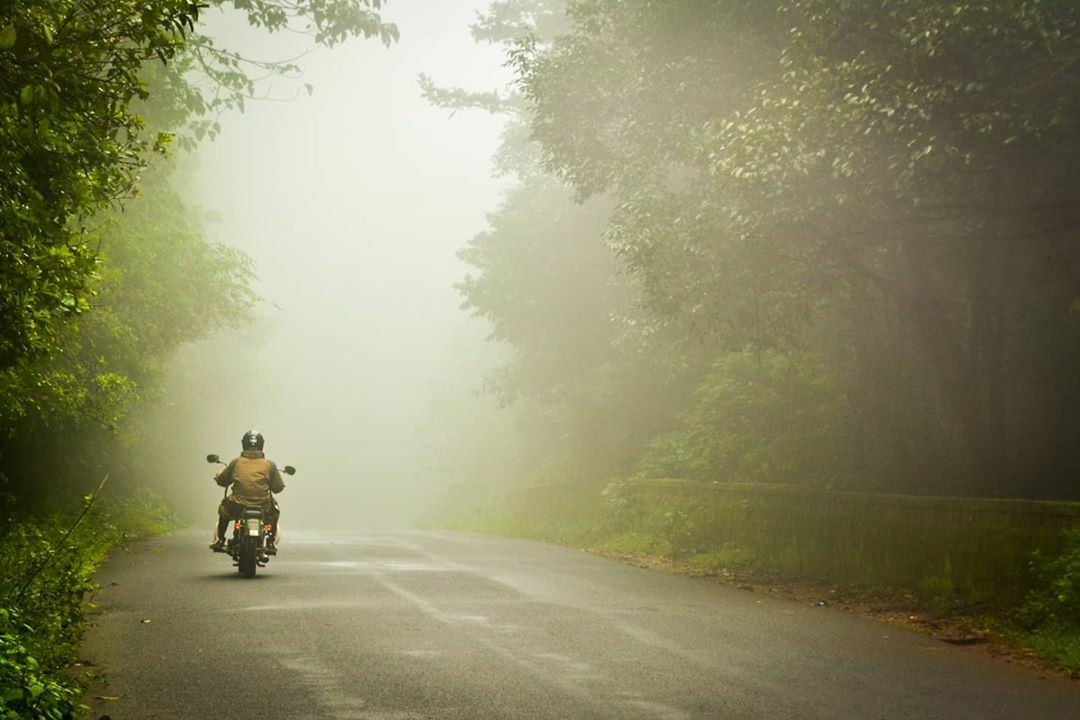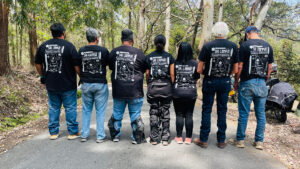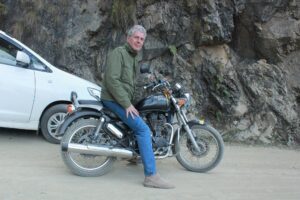In part one of this guide on planning a long motorcycle ride in India, we looked at the essential factors of
- An efficient luggage system.
- Tools to use for navigating on your motorcycle adventure.
- Essential gear for touring in tropical/summer climates
- The importance of Motorcycle travel Insurance.
In part two of this article, we look at some of the often overlooked or unknown factors to keep in mind when motorcycle touring over long distances. Let’s dive right in..
Eating right, sleeping right. What is the ideal balance when planning a long motorcycle ride in India?
All you need is love food and a cold beer. 😉
Counterintuitive but true, motorcycling every day for long stretches of time is exhausting. You may think that you’re just sitting on a seat; however, a long day of riding will leave you fatigued. The trick is subtle but easy. Here are some tips to keep you balanced :
How much food: On ride days stick to having a light lunch as opposed to a full meal. Indulge at dinner and don’t skip breakfast Remember that you are using large amounts of energy and you need to supplement your body with right energy
What food: While that refined carb loaded heavy meal is heaven on a plate, it’s not really helping your body refuel with clean energy. The alternative is to stick to whole carbs, protein and fiber rich foods for all your fuel.
Keep a stash of Energy bars, a fruit and nut mix, or dark chocolate.
Remember that mental fatigue is also a factor so remember to have a ready supply of water at all points in the ride. And try to avoid heavy drinking before a ride day.
Over the years of riding long distances there is one thing I have learned.. The tendency is too think that you can ride all day – everyday. But, after a few days of continuous riding your body’s reaction time tends to get slower. Ideally, keep a rest day in between two – three riding days and get enough sleep (6hrs+) when resting.
Is it advisable to motorcycle long distances in India after dark?
India is a magnificent country, beautiful in variety and things to see, but from a motorcycling point of view this is best (and prudently) only experienced in the day. Here are some considerations to keep in mind:
Some people enjoy riding at night, I’m one of them.. However, riding on two lane highways in the dead of night is not the smartest idea on Indian roads.
The problem lies in vehicular traffic not knowing that they shouldn’t travel with their high beams on all the time or in some cases they use it as a show of strength.
Being hit straight in the eyes with a high beam, disorients you for a good number of seconds and that is very dangerous on the road.
If you have a breakdown , almost always they can get complicated and often impossible to repair in most night riding situations in India.
Leaving you, your motorcycle and the adventure ahead in a highly compromised situation. Depending on the region, you are travelling through, the dangers can get very real, very fast!
Roughly around 17 people die from accident related situations across India every hour. And a majority of them occur at night. Often when touring through rural India (there’s a lot of it) you are riding on routes that are often deserted at night.
So, it is a good idea to not risk motorcycling long distances in the night. Stick to travelling between sunrise and sunset or risk putting yourself in a situation(s) out of your control.
What about the weather?
When travelling anywhere, always take into account the weather. Preliminary research on the season you are riding in always helps to prepare. Especially with rain, the heavens have an almost diabolical wayof running a perfect ride mood.
So use common sense and pack accordingly. Rain gear for the monsoons, even if chances of rain are low ( especially in the tropics). Woolens and insulated clothing for the winter. Summers, ensure you have plenty of sunscreen & vented riding gear.
A handy tip to keep in mind is that weather in hilly regions can change quite quickly. Say, at the foothills of a valley, it’s sunny and clear. However, as you near the top or the mountain pass it can completely change, with visibility down to only a few feet ahead of you.
Finally, for a long motorcycle Ride in India, remember to always also pack your luggage (if not carrying panniers) with a rain or dust cover to keep it clean when you unload at the end of the day.
The importance of having safety cash and planning daily expenses
Anything that can go wrong will go wrong ..
And so you need to prepare for a long motorcycle ride accordingly. Always have a safety/emergency stash of money kept aside no matter if you have multiple credit and debit cards. Nothing solves problems faster than cold hard cash.
Keep in mind that, while it can be a little risky to carry a chunk of money on your person, often the places you visit (on the routes you will be riding through) will have shops, restaurants or hotels that only accept cash. Also, in more remote locations, internet connectivity may be sketchy or absent, leaving your cards completely unusable.
What is the ideal pace to maintain when riding and the importance of taking regular breaks?
A subjective topic for motorcycling that is best handled with a few riding tips kept in mind
Planning: Terrain and the type of riding you will encounter will change from day to day and so while one day you are riding complete straight and lonely highways, the next day you will find yourself meandering through forest roads.
Hence, it’s important to understand your route ahead and plan stop points and legs of your journey accordingly. That way you can leave aside the boring parts and focus on the right spots that will leave you in awe.
Pacing: Though it might feel like you’re just sitting on the bike, riding can get exhausting. However done right it can be so much fun. Avoid trying to speed all the time, it’s dangerous and will leave you exhausted. Though it depends on rider to rider, keeping an average speed of 60 – 80 kms per hour is ideal on Indian roads.
This way you can enjoy the scenery and cover the day’s distance comfortably. An ideal distance for motorcycling in Indian road conditions is an upper limit of 200 kms per day , with exceptions when needed.
Breaks: Ideally you should be taking a break every hour , even though it maybe a short five or ten minute stop. It aids your body from stiffening up and helps in any muscle injuries due to the strain of non-stop riding. Plus, it allows your motorcycle to cool down a bit.
Stretching: Make sure that when you do pull over, move and stretch your body. It helps release the tension in your muscles and joints from keeping them in one position during your time in the saddle.
Now that you know what to plan, how about some inspiration and a list of Five Motorcycle Routes in the Western Ghats of India?
We would love to hear what you think about these routes in the comments below, and have a look at our curated options for motorcycle touring in India or just message us for any motorcycle travel questions you have. Happy to share our knowledge and expertise.
Before you go, and if you have time to indulge in more stories about motorcycle touring in India, check out our blog post on Reasons to Ride in South India. The roads never ends..




